Extended heat wave begins Friday in Northeast
Temperatures will be over 90 across much of the eastern and central U.S.
Excessive and dangerous heat has overtaken the central U.S. and is expanding toward the East Coast for this weekend. As this heat heads toward the Northeast, several consecutive days above 90 degrees are likely. Hot temperatures will last into next week, and possibly right through the Fourth of July.
Denver reached 105 degrees on Thursday, tying its all-time record-high temperature.
Heat is building through the central U.S. today with heat index values well over 100 degrees from Texas to Wisconsin. Des Moines, Iowa; Chicago, St. Louis and Kansas City, Missouri, will see heat index values nearing or exceeding 110 degrees. Some of the higher temperatures have now expanded to the East, with 90s likely across the Appalachians, the Southeast and into parts of the Northeast.
Today is forecast to be Day 1 of a multi-day heat wave in New York City.
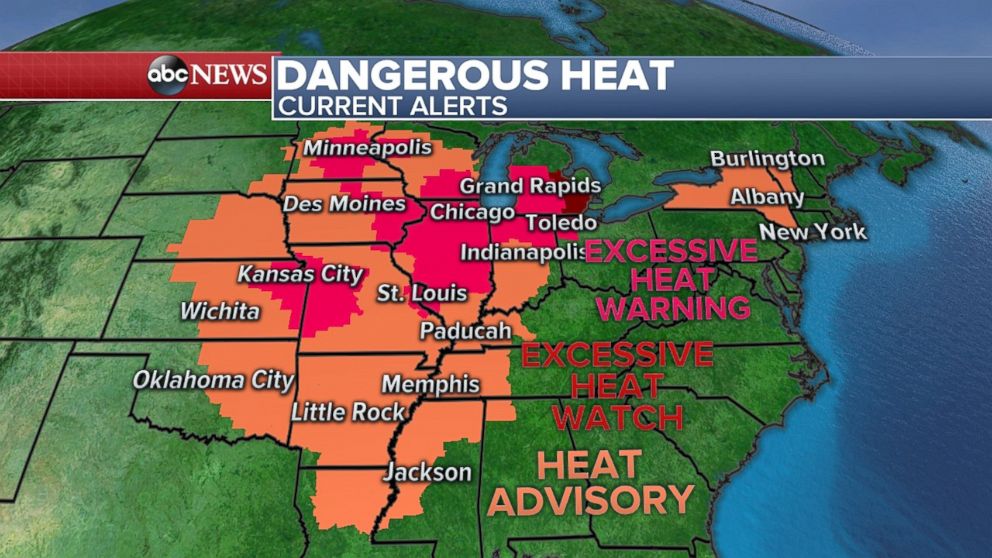
The heat will nudge just a little farther east Saturday with much of the Midwest, South and Appalachians seeing heat-index values nearing 100 degrees or higher. On Sunday, the heat really gets going in the Northeast, with heat-index values exceeding 100 degrees from Washington, D.C., to New York and Hartford, Connecticut, to Albany, New York, and Burlington, Vermont.
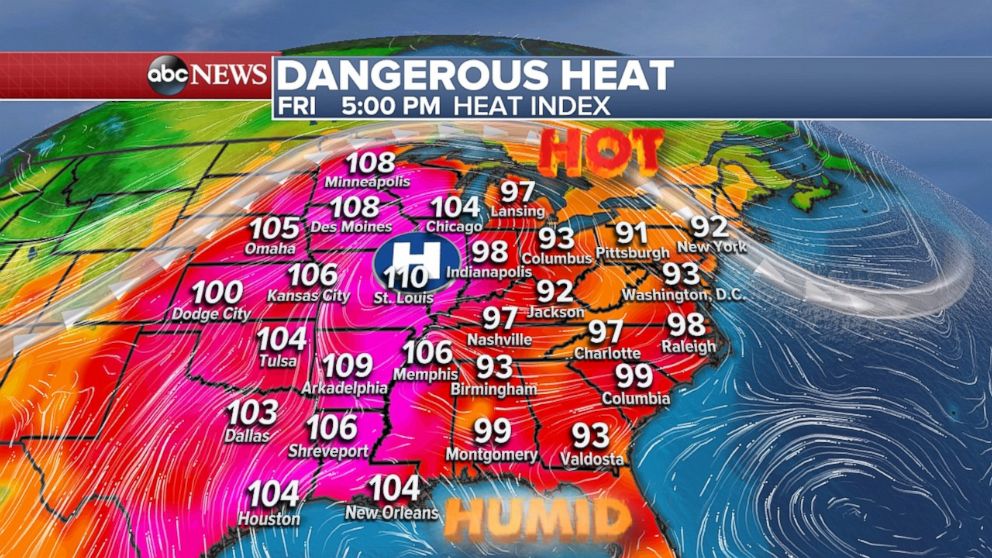
Actual temperatures this weekend across the Northeast will be well into the 90s, meaning parts of the Northeast will see its first heat wave of the season.
The heat looks like it is sticking around into next week, with hot temperatures expected in the Northeast through at least the Fourth of July.
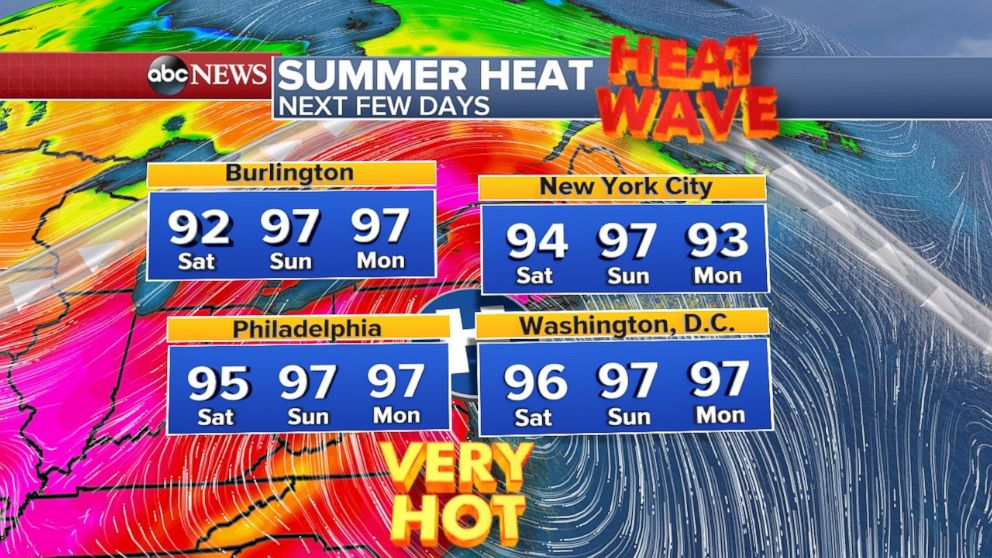
Severe weather up north
Severe weather will start again later today in the Northern Plains, from Rapid City, South Dakota, to Minneapolis, Minnesota. The severe weather is not expected to be as bad as Thursday, but more strong winds, large hail and brief tornadoes will be possible.
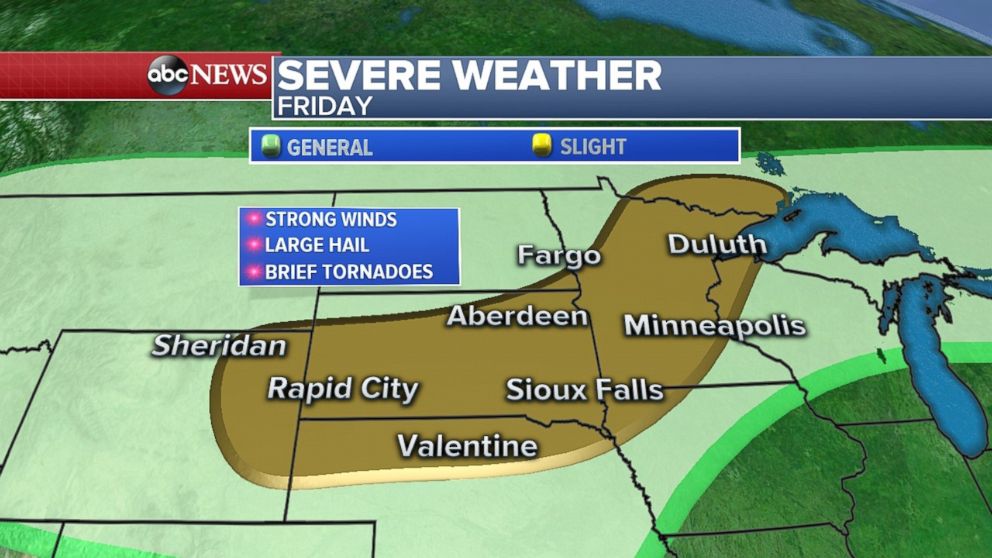
The best chances for this severe weather is in the slight risk region from Wyoming to northern Wisconsin. Any slow-moving thunderstorms could bring flash flooding in this region.
Tomorrow there is a chance for severe weather from Kansas to the Upper Peninsula of Michigan with damaging winds and large hail being the main threat. Once again, flash flooding is a concern with slow-moving storms.
Western fires
There are currently 54 large wildfires building across the western U.S. from New Mexico to Alaska -- with the majority of the fires in Alaska.
The Spring fire in Costilla County, Colorado, has burned 4,000 acres - burning multiple homes in the county. The Costilla Board of County Commissioners has declared parts of the county a disaster area. The fire is 0 percent contained, and some evacuations remain in place for parts of that county.
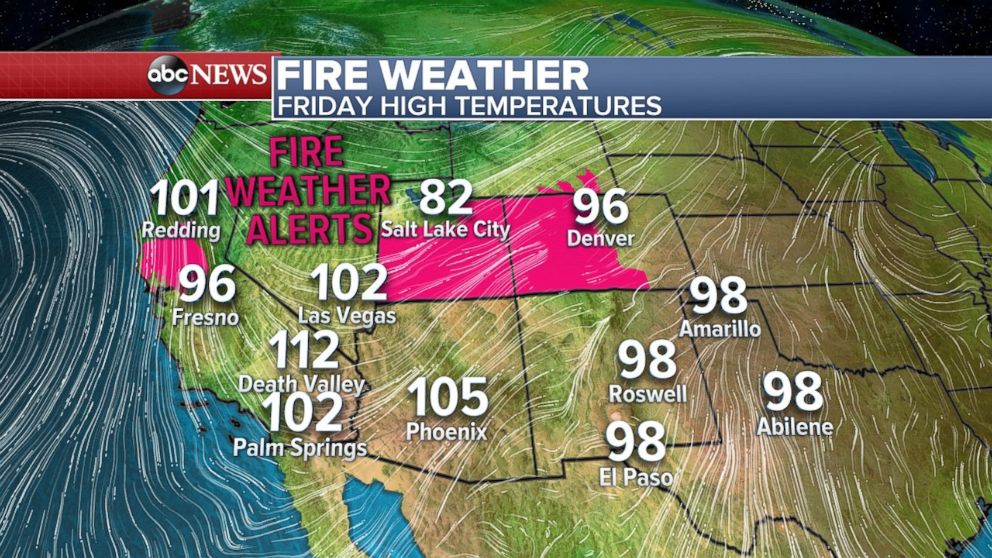
It will be another day of very warm temperatures across much of the West, with triple digits likely from the Southern California deserts to Colorado and New Mexico. Temperatures will be nearing 100 degrees in parts of interior California today.
Gusty winds, locally over 40 mph, low relative humidity and high heat will bring the next round of high fire conditions across parts of the West from Northern California to Colorado. Of particular concern for fire developments today is southern Utah and southwest Colorado.